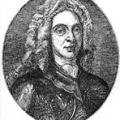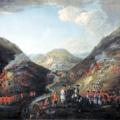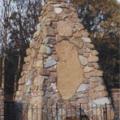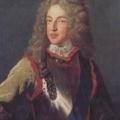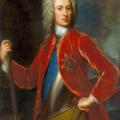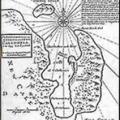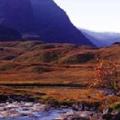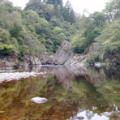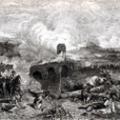Sub Categories
Scottish History
Posted on February 6, 2013 by Donald
The man credited in the National Anthem with the ability to frustrate and crush rebellious Scots is also the man who brought the first proper roads to the Highlands.
Major-General George Wade was Commander-in-Chief of North Britain from 1724 until 1740, during which time he had military routes ac...
Posted on February 6, 2013 by Donald
The first Rising had failed by 1716, though skirmishes would continue.
1719 saw what was known as the "little Rising". The only battle of this Rising occurred between a government army led by General Wightman and Jacobites under the 10th Earl Marischal at Glenshiel.
The Jacobite cause was suppo...
Posted on February 6, 2013 by Donald
On the 6 September 1715, the 6th Earl of Mar, John Erskine, declared himself for James Francis Edward Stewart, the Old Pretender, and left Braemar carrying the Stewart standard to head south to the Jacobites in England. By the end of the month he had taken over Inverness with twelve thousand men b...
Posted on February 6, 2013 by Donald
Thanks to the treatment of Scotland before and after the 1707 Union, there was always strong underground support for the reinstatement of the exiled Stewarts to the throne.
Events following the death of Queen Anne in 1714 brought emotions to a level where the man who would lead government forces,...
Posted on February 6, 2013 by Donald
The crowns of Scotland and England had become one in 1603 and Cromwell had tried to bind the countries’ political systems together fifty years later, but Scotland still wanted to govern its own religious, financial and political affairs.
The eighteenth century began for Scotland with financial ru...
Posted on February 6, 2013 by Donald
For twenty years the London East India Company had enjoyed soaring success, bringing incredible fortunes to its stockholders through its virtual monopoly of Eastern trade.
By 1695 competitors in the market were using every scandalous technique to have Bills in their favour passed in England’s Par...
Posted on February 6, 2013 by Donald
While the other MacDonald clans suffered through the 1500s, the MacDonalds of Glencoe survived notably well. Perhaps their greatest protection was their home environment acting like a natural fortress. They certainly never found the need to build one. Also only the strongest of people could develo...
Posted on February 6, 2013 by Donald
James had converted from Protestantism to Catholicism in 1668 whilst his brother Charles II was monarch. When the King too converted and tried to re-install Catholicism among his subjects around 1672, there was outrage. Acts were passed in Parliament, such as the Test Act, so only Anglicans could ...
Posted on February 6, 2013 by Donald
Near Pitlochry in Perthshire is the Pass of Killiecrankie, a gorge with a six feet wide riverside track.
News came to Jacobite leader Viscount Dundee, John Graham of Claverhouse, that General Hugh MacKay would be moving his men from Stirling to Blair Castle. Dundee, known by his supporters as Bon...
Posted on February 6, 2013 by Donald
Following success against the military at the recent Battle of Drumclog, the Conventiclers’ support had swollen to six thousand when they came together at Hamilton in June 1679.
Differences between Covenanters which had undermined them through the 1650s, again created factions among their numbers...


